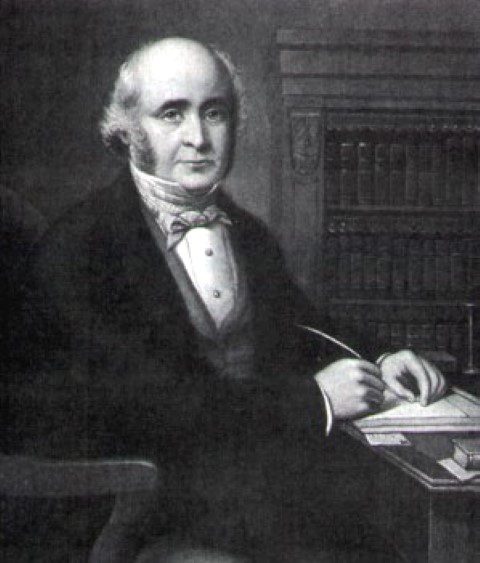Marie-Catherine Mousseau
Ireland
 |
| Robert Todd of Todd’s paralysis |
Robert Bentley Todd is best remembered for Todd’s paralysis – or post-epileptic paralysis – the temporary stiffening of the limbs that may follow some seizures. But as we shall see, this is a tiny fraction of what this forgotten great Irish figure contributed to the field of epilepsy, and even to neuroscience and neurology.
Born in 1809 in Dublin as the fourth child and second son of 15 siblings, Robert Todd came from an influential family. His father was president of the Royal College of Surgeons and his brother of the Royal Irish Academy. Educated at Trinity College Dublin and at Royal College of Surgeons of Ireland, Todd later moved to London, where he helped establish King’s College Hospital in 1840 and built a reputation as an outstanding physician and teacher.
However, according to Dr. Edwards Reynolds, Consultant Neurologist at King’s College Hospital in London and leading authority on the life and career of Robert Bentley Todd, the Irish doctor was much more than that. “He was the UK’s first outstanding neurologist and neuroscientist … before these disciplines existed,” he noted, speaking at a lecture organized in Trinity by Brainwave, The Irish Epilepsy Association.
The years 1838-1839 had seen a fundamental advance in our understanding of biology; this was the realization by Schleiden and Schwann that all plants and animals are composed of cells. Robert Todd was the first to apply the cell theory to the nervous system, and first to recognize the continuity of axons and dendrites to cell bodies.
But as explained by Dr. Reynolds, Todd’s contribution to the understanding of the brain went well beyond the mere description of its components. “Todd was undoubtedly the first to understand the function of neurones. He saw neurones as a kind of battery, and understood that polarization and depolarization processes involving particles accounted for conduction.” Dr. Reynolds added: “He realized that what he called ‘nervous polarity’ was analogous to voltaic electricity, while not exactly the same.” In other words, as early as the 1840s, Robert Todd was the first to develop and confirm the electrical concept of brain activity.
In this inspired insight the physician was largely influenced by Michael Faraday, the greatest electrical scientist of all time, with whom he closely collaborated. Driven by Faraday’s concepts, Todd recognized that the Schwann structure around neurons was an insulation to facilitate conduction. From Faraday as well he got the idea of using the term “disruptive discharge” in relation to epilepsy.
The current view at the time was that epilepsy was a circulatory disorder. Todd’s insight of an electrical brain activity led him to develop a radically new theory to account for epilepsy – a theory of epilepsy based on electrical discharges in the brain – making him the first man to identify the role of electricity in the condition. Todd presented his new theories in a series of Lumelian lectures to the Royal College of Physicians in 1849.
In spite of these, it took a long time for medicine and biology to catch up with what Robert Todd had predicted. The old circulatory theory of epilepsy persisted until the end of the 19th century, and well into the 20th, until the German psychiatrist Hans Berger made the first electrical recording of the human brain in 1924. In the 1870s, that is some thirty years after Todd’s discovery, Jackson, Hitzig, and Ferrier developed the concept of excitability and used the term discharge in relation to brain activity – but with no true understanding of electromagnetism and completely overlooking Todd’s pioneering work. Another 30 years later, Cajal and Golgi came up with their neurone doctrine, which gave them the Nobel Prize in 1906. But here again, there was no mention of Todd’s precursory insights.
It took up to the mid-twentieth century, with the critical work of another set of Nobel Prize winners, Hodgkin and Huxley (1963), to describe the precise role of ionic particles (including sodium, chloride and potassium) to account for neuronal transmission – the same polarized/depolarized particles that were intuited by Todd more than a century earlier.
In 1860, Robert Bentley Todd died prematurely at the age of 51 from a gastric hemorrhage. His reputation faded away long before his predictions turned out to be true and people could acknowledge his contribution. He was far too ahead of his time.
MARIE-CATHERINE MOUSSEAU, PhD, holds a doctorate in neurosciences and is the editor of the Irish medical directory MIMS Ireland. She is also a freelance medical and science journalist in Dublin.
Highlighted in Frontispiece Spring 2015 – Volume 7, Issue 2
Spring 2015 | Sections | Physicians of Note

Leave a Reply